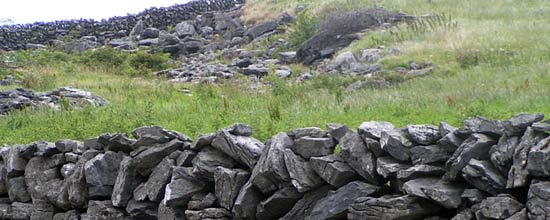

Guidelines for Reconstructing Cultural Landscapes
Structures, Furnishings, + Objects

![]()
Reconstructing a non-surviving structure, furnishing or object to depict the documented historic appearance. Although traditional materials such as masonry, wood, and architectural metals are preferable, substitute materials may be used as long as they recreate the historical appearance. For example, recreating a stone perimeter wall using a poured concrete core and stone facing.
![]()
Reconstructing a structure, furnishing and object that cannot be documented historically or for which inadequate documentation exists.
Using substitute materials that do not convey the original appearance of the cultural landscape.
Interpret the Reconstructed Landscape
![]()
Using signs or interpretive markers to identify the building, structure, furnishing or object as a contemporary re-creation. For example, installing new signage along a historic motorway, to identify the reconstruction of a scenic overlook.
![]()
Failing to identify and interpret the reconstruction of a structure, furnishing or object as a re-creation, thus confusing the public understanding.